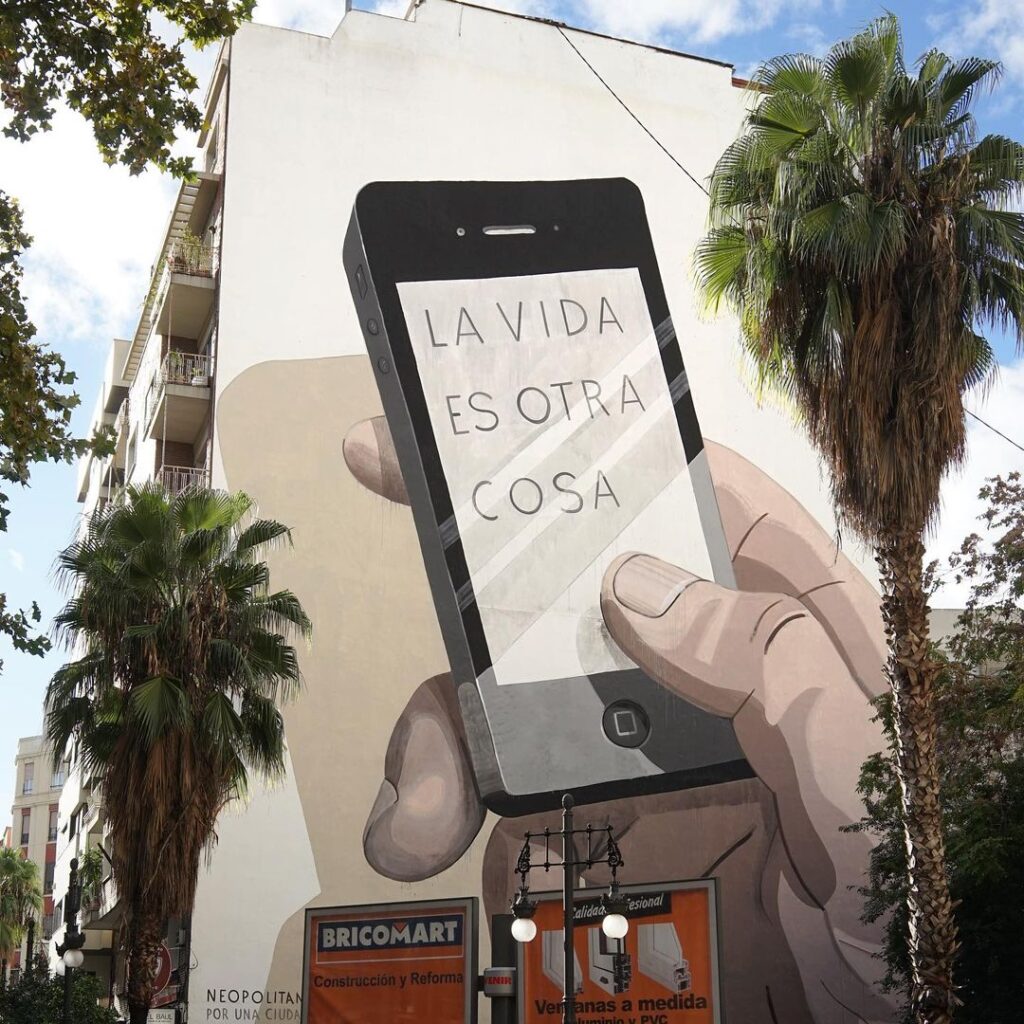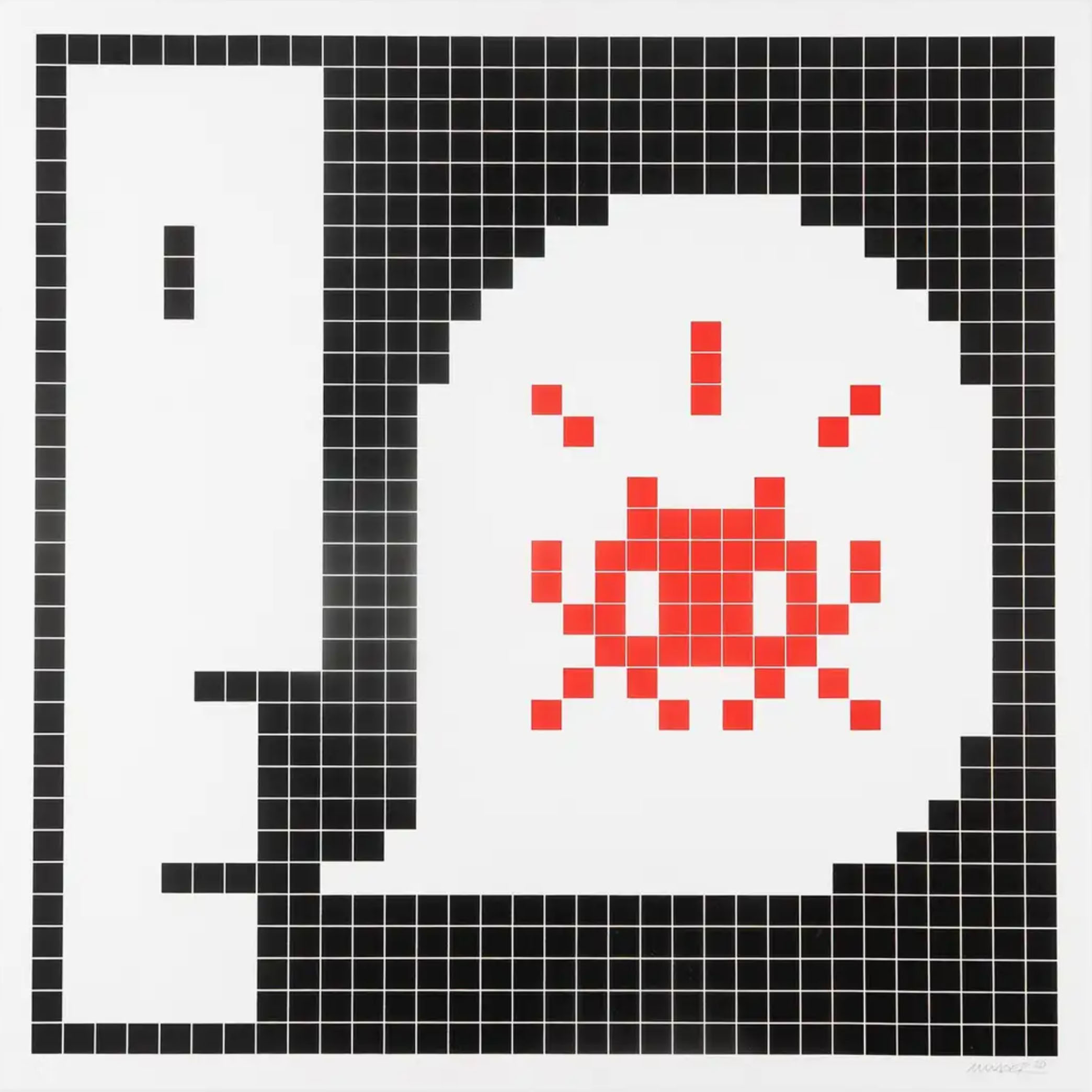In 2018, the renowned street artist Escif collaborated with Greenpeace to create a mural. The artwork featured a colossal phone with the message “La vida es otra cosa/ Life is something else,” which aimed to inspire people to look beyond their screens and walls and truly see themselves.
“Painting a wall is an act of psychomagic; it is a poetic and subtle gesture that turns a barrier into a window; it is a powerful exercise of dissolution of matter that gets, for a few seconds, the concrete disappears; it is an opportunity we have, as creative beings, to imagine a different world,”
Escif (translated FB)
Unfortunately, the mural is no longer there, and its removal has caused disappointment and frustration to both the artist and the community. A multinational corporation approached the Barreira School of Art and Design with an offer to use the wall for a holiday campaign, which led to the mural’s disappearance. The school viewed this as an opportunity to repair damages on the wall and proposed to Escif that he could repaint it after the campaign. However, Escif refused the offer, stating that allowing a corporation to erase social content on a wall in favour of promoting itself would be a victory of capitalism over culture.
It is a shame that the school didn’t appreciate the value of Escif’s artistic vision and skill as a priceless addition and a source of pride and joy for their school.

Image copyright Escif
Escif’s principled stance highlights the ongoing struggle between art and commerce, where corporations often prioritise their interests over the community’s. Escif’s refusal to repaint the wall sends a powerful message that art is not just decoration but a tool for social change. It challenges us to question the status quo and envision a better world where creativity and self-expression are valued over profit margins.
Historically, street art has always been a medium for artists to express their creativity and convey social and political issues. However, in recent years, big corporations have started to take over the same wall spaces and use them for advertising, leading to the demise of the street art scene. Walls that were once adorned with vibrant and thought-provoking artwork are now covered in advertisements for a wide range of products, from food to banks. This trend has had a profound impact on the street art scene. Artists who were once able to express themselves freely are now being pushed out by corporate interests. The walls that were once reserved for street art are now being used to promote commercial products and services, which suppresses the community’s voice.
Escif’s refusal to repaint the wall after the holiday campaign encourages us to fight for creative expression. Escif’s mural removal is a call to action for us to protect street art from corporate interests and ensure that it remains a platform for artists to express their creativity.
We must continue to support street artists who use their work to create a better world and challenge us to imagine a world where creativity and self-expression are valued over profit margins.
